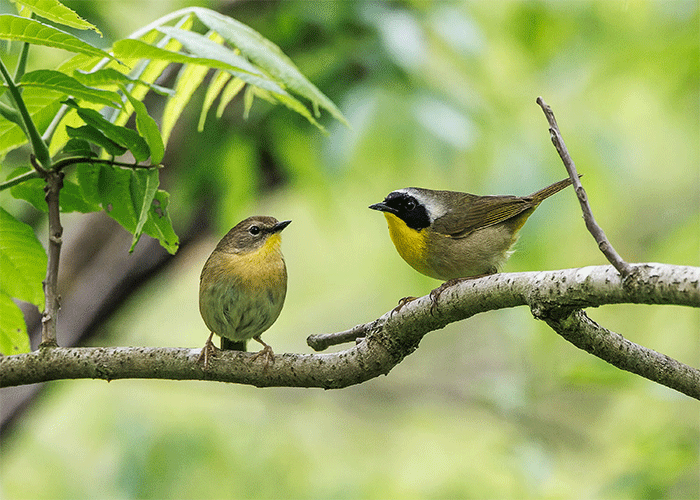Fall Migration Is the Most Dangerous Season for Warblers
by National Audubon Society

Scientists with the National Audubon Society published a new study in Global Change Biology that analysed 43 species of warblers and the conservation challenges they face along their migrations to better understand their population trends. The results suggest that the post-breeding, southbound migration season (i.e. “fall migration” for the Northern Hemisphere) is the most dangerous time of year for these migratory songbirds. Challenges such as light pollution, developed landscapes and livestock management are the factors most highly associated with the declines of some warbler species.
“Knowing when migratory birds face their biggest challenges is key to being able to protect them now and into the future,” said Melanie Smith, Audubon’s director of digital science and data products and co-lead author of the study. “This new study sheds light on both the specific risks associated with warbler declines as well as the time of year they are exposed to these challenges. Knowing those factors allows Audubon and our partners to work across the hemisphere to ‘bend the bird curve’ and secure a healthy future for these long-distance travellers.”
Southbound, post-breeding migration is more perilous for migratory warblers for multiple reasons. First, there are many juvenile birds that hatched earlier that year. These crops of younger birds are inexperienced in migration compared to seasoned adult birds. Second, the birds take longer routes back to their non-breeding grounds compared to the quicker, more efficient (and therefore somewhat less dangerous) journeys north.
During post-breeding migration some of the declining species most closely associated with challenges such as light pollution and developed landscapes (both urban and suburban) include the Common Yellowthroat, Connecticut Warbler and Prairie Warbler. Livestock management in regions between breeding and non-breeding grounds is the challenge most associated with the declines of species such as Virginia’s Warbler and Grace’s Warbler.
Bird populations are in steep decline across the continent. In 2019, a groundbreaking study published in Science found that there are nearly 3 billion fewer birds in North America compared to 1970. Nearly 2.5 billion of those missing birds are from migratory species like the warblers featured in this latest study. More recently, the 2025 State of the Birds report, a status assessment of US bird populations, found that birds are declining across all habitat types and status quo conservation efforts are not enough to reverse these declines.
“Protecting migratory birds will require a hemispheric effort across borders and communities,” said Dr. Jill Deppe, Audubon’s senior director of the Migratory Bird Initiative and another co-author of the study. “While the challenges these birds face are numerous and widespread, if we can rally the millions of people who care about birds to take everyday steps like turning lights off at night, growing native plants, and supporting bird-friendly infrastructure, then we can make a positive difference across the hemisphere.”
In 2022, Audubon and partners launched the Bird Migration Explorer, a first-of-its-kind, interactive digital platform that visualizes the journeys made by more than 450 species of migratory birds found in the United States and Canada. The journeys of the bird species are overlaid with the hemispheric footprint of the Conservation Challenges included in this study. To learn more about migratory birds and the challenges they face throughout the year, please visit: www.birdmigrationexplorer.org.
4 Apr 2025
Share this story







